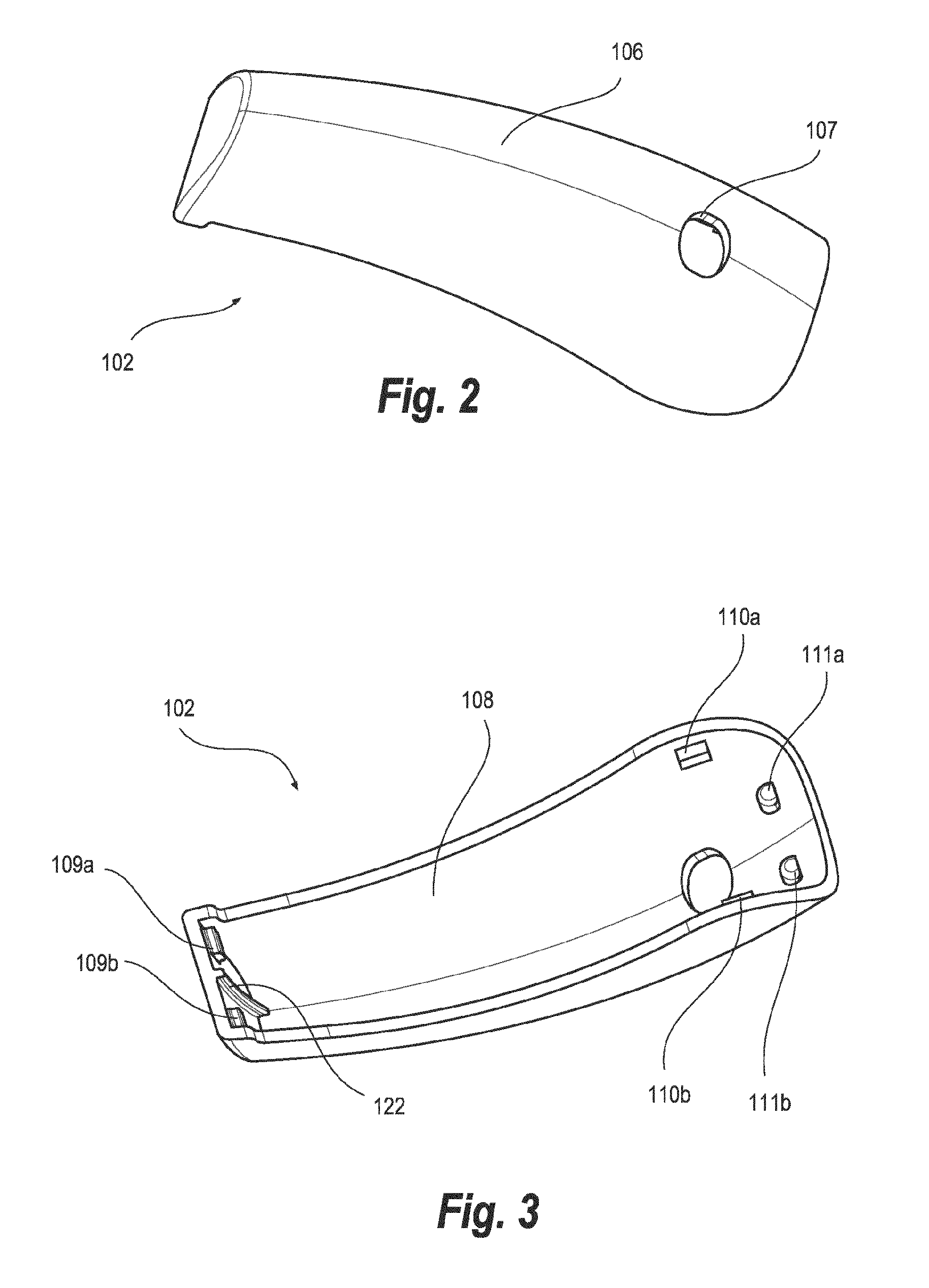Hearing aid adapted for suppression of wind noise
a technology of hearing aids and wind noise, applied in the field of hearing aids, can solve the problems of increasing the acoustic attenuation of the desired sound, being too big or too bulky for implementation in a hearing aid, etc., and achieve the effect of efficient suppression of wind nois
- Summary
- Abstract
- Description
- Claims
- Application Information
AI Technical Summary
Benefits of technology
Problems solved by technology
Method used
Image
Examples
first embodiment
[0044]Reference is first made to FIG. 1, which illustrates selected parts of a hearing aid 100 according to the invention. The hearing aid 100 consists of a housing part 101, a wind shield cover 102, a connector part 103 and an earpiece (not shown). The housing part 101 includes two microphones, a microelectronic circuit comprising a signal processor, an acoustic output transducer, a toggle switch 104 and a push-button 105. The connector part 103 is designed for conveying an acoustic signal from the output transducer to the earpiece and towards the eardrum of a user wearing the hearing aid. The wind shield cover is adapted for protecting the microphone inlets from dirt and moisture and for suppressing wind noise. The hearing aid housing 101 and the wind shield cover 102 are adapted for forming side openings 118a and 118b (similar openings are formed at the opposite side of the hearing aid housing) when the wind shield cover is attached to the hearing aid housing. The openings are ad...
second embodiment
[0064]Reference is now made to FIG. 8, which illustrates highly schematically a cross-section of a hearing aid 200 according to the invention. The figure illustrates cross-sections of upper and lower hearing aid housing parts 201 and 202, a microphone inlet 212, a microphone 121 and a sound transmission channel 205. The sound transmission channel 205 provides for sound to be guided from the surroundings and to the microphone inlet 212. The sound transmission channel provides propagation of sound through the interior of the hearing aid housing as opposed to propagation in a gap between a wind shield cover and the outer surface of the hearing aid housing. Hereby the size of the hearing aid housing can be minimized because the wind shield cover is not required. Another advantageous aspect is that the sound transmission channel can be freely shaped, whereby the achievable minimum distance between the microphone inlets and the opening of the sound transmission channel can be increased. T...
PUM
 Login to View More
Login to View More Abstract
Description
Claims
Application Information
 Login to View More
Login to View More - R&D
- Intellectual Property
- Life Sciences
- Materials
- Tech Scout
- Unparalleled Data Quality
- Higher Quality Content
- 60% Fewer Hallucinations
Browse by: Latest US Patents, China's latest patents, Technical Efficacy Thesaurus, Application Domain, Technology Topic, Popular Technical Reports.
© 2025 PatSnap. All rights reserved.Legal|Privacy policy|Modern Slavery Act Transparency Statement|Sitemap|About US| Contact US: help@patsnap.com



